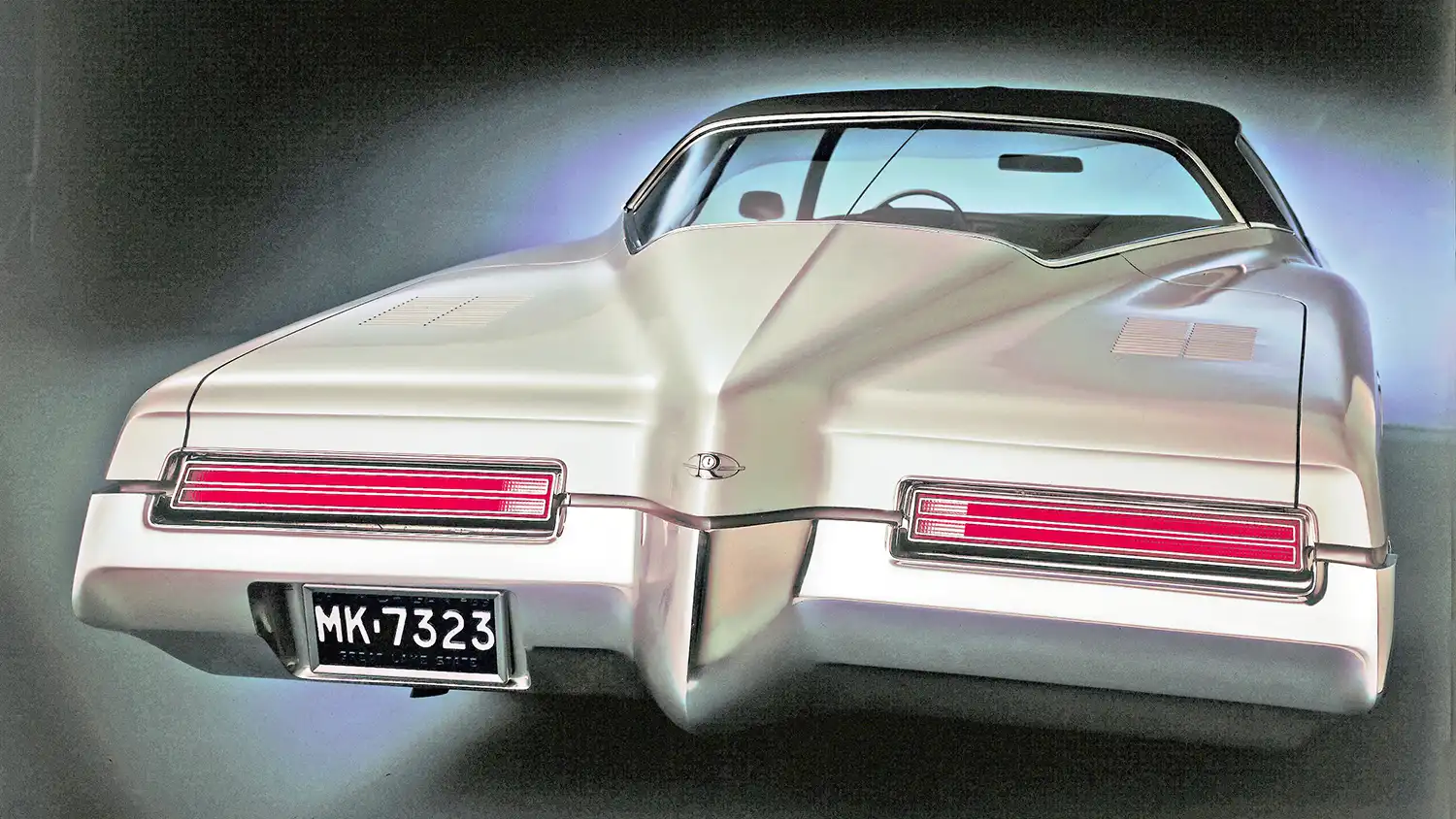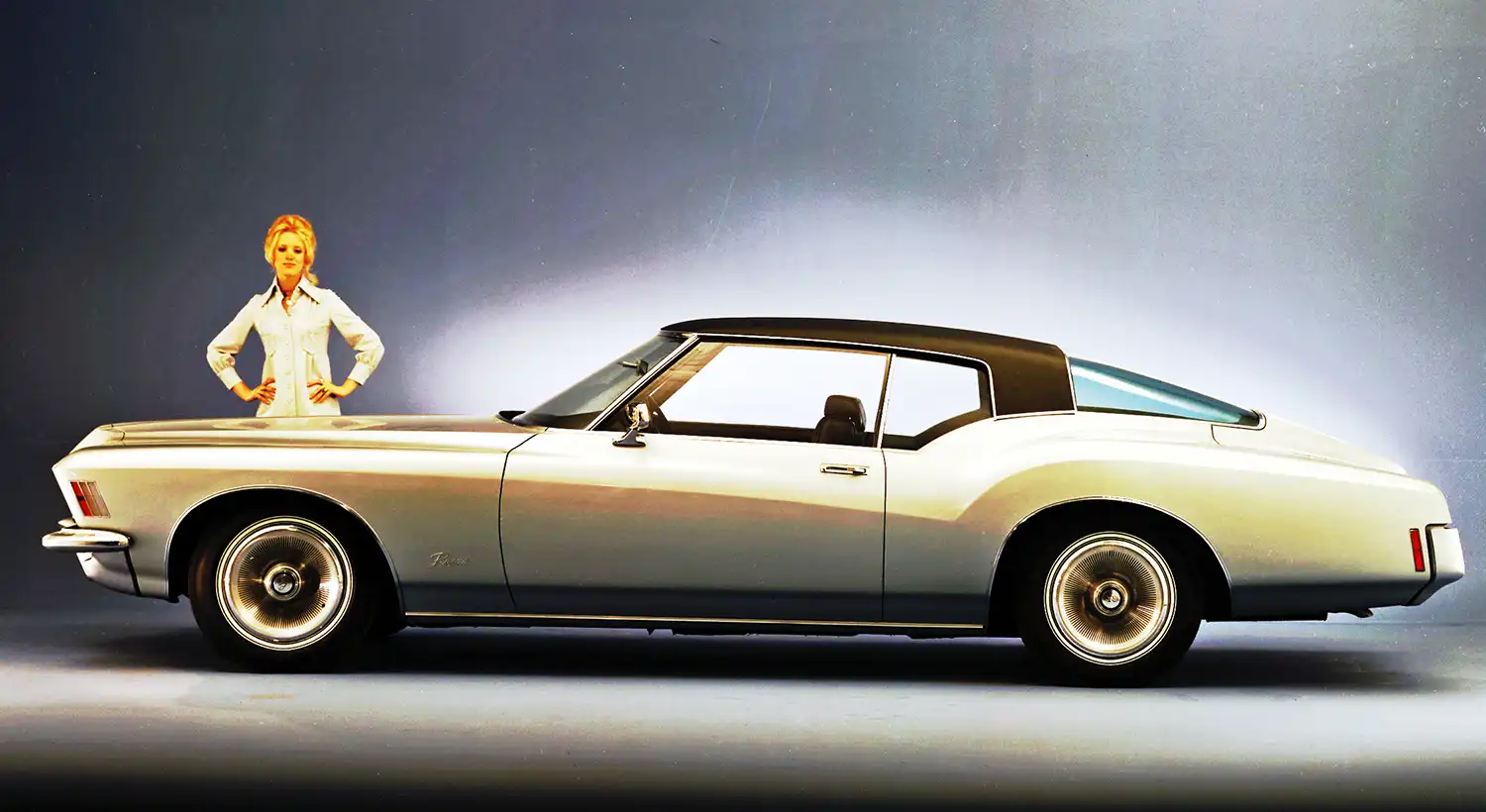
The Buick Riviera, since its debut in 1963, has consistently represented a unique blend of personal luxury and sporting flair within the Buick lineup. The 1971 model year marked a significant departure in styling for the Riviera, ushering in a bold and distinctive “boattail” design that remains instantly recognizable and highly debated among automotive enthusiasts. This third generation Riviera, produced from 1971 to 1973, embraced dramatic curves and a unique rear end treatment, setting it apart from its contemporaries and solidifying its place as a true automotive icon of the era. Despite its polarizing looks, the 1971 Riviera Coupe offered a comfortable ride, a well-appointed interior, and a powerful V8 engine, staying true to Buick’s tradition of providing refined performance and luxurious features in a stylish package.
The Divisive “Boattail” Design: The most defining characteristic of the 1971 Buick Riviera Coupe was its radical “boattail” styling. This design, penned by Jerry Hirshberg under the direction of Bill Mitchell, featured a sharply tapered rear decklid and a distinctive Kammback-inspired rear window. The flowing lines of the front fenders and the long hood led to this dramatically sculpted rear, creating a silhouette unlike anything else on the road at the time. While some admired its bold and adventurous spirit, others found it unconventional. Regardless of personal opinion, the “boattail” Riviera made a statement and ensured that it was never mistaken for another car. The front end featured a prominent grille and hidden headlights, contributing to its sleek and somewhat mysterious appearance. The overall design conveyed a sense of personal luxury with a hint of sporting intent, a departure from the more traditional lines of other full-size coupes of the era.
Luxurious and Driver-Oriented Interior: Inside the 1971 Buick Riviera Coupe, the focus was on creating a comfortable and luxurious environment with a driver-centric feel. The spacious cabin typically featured plush seating, often upholstered in rich fabrics or supple vinyl. The dashboard design was characterized by a sweeping, integrated look, often incorporating simulated wood grain accents to enhance the sense of luxury. The layout of the gauges and controls was generally well-thought-out, placing essential functions within easy reach of the driver. Available features often included power windows, power locks, air conditioning, a tilt steering wheel, and a high-quality sound system, all contributing to a refined and enjoyable driving experience. The emphasis was on personal luxury and comfort for both the driver and passengers, making it an appealing choice for those who wanted a stylish coupe without sacrificing interior amenities.
Powerful Buick V8 Engines: The 1971 Buick Riviera Coupe was powered by robust Buick V8 engines, providing ample power and a smooth driving experience. Torque-Rich Performance: The standard engine was typically a 455 cubic inch V8, renowned for its impressive torque output. This large displacement engine provided effortless acceleration and strong performance across the rev range, perfectly complementing the Riviera’s luxurious character. Buick also offered variations of the 455 V8 with different horsepower ratings. These engines were designed to deliver a refined and powerful driving experience, consistent with the Riviera’s positioning as a personal luxury coupe. The standard transmission was a smooth-shifting automatic, further enhancing the effortless cruising ability of the car. The emphasis was on providing a balance of power and refinement, making the Riviera a comfortable and capable grand tourer.
Comfortable Ride and Handling: The 1971 Buick Riviera Coupe was engineered to provide a comfortable and smooth ride, prioritizing luxury over outright спортивное handling. Its substantial wheelbase and carefully tuned suspension system effectively absorbed road imperfections, delivering a plush and isolated driving experience. Power steering was standard, making the large coupe relatively easy to maneuver. Power brakes were also included, providing adequate stopping power. While not designed for aggressive cornering, the Riviera offered stable and predictable handling for everyday driving and highway cruising. The overall driving experience was characterized by a sense of relaxed confidence and smooth power delivery, making it an ideal car for long-distance travel and comfortable daily use.
A Unique Automotive Statement: The 1971 Buick Riviera Coupe, with its distinctive “boattail” design, stands as a bold and memorable statement in automotive history. Its unique styling, while initially polarizing, has gained appreciation over time for its audacity and individuality. The Riviera represented a departure from conventional design trends and showcased Buick’s willingness to take risks in the personal luxury coupe segment. Despite its unconventional looks, it remained true to Buick’s core values of providing a comfortable, well-equipped, and powerful vehicle. Today, the 1971 Riviera Coupe is a sought-after classic, admired for its distinctive styling and its representation of a unique era in American automotive design. Its legacy lies in its boldness and its ability to stand out from the crowd, solidifying its place as a true automotive icon.
Summary:
- Featured a distinctive and controversial “boattail” design.
- Represented personal luxury with a hint of sportiness.
- Offered a comfortable and well-appointed interior.
- Powered by robust Buick 455 cubic inch V8 engines.
- Prioritized a smooth and comfortable ride.
- A bold and memorable design from the early 1970s.
- A sought-after classic among automotive enthusiasts.
Disclaimer: Information provided is based on general automotive knowledge and historical data regarding the 1971 Buick Riviera Coupe. Specific engine options and features may have varied. Consult original specifications and documentation for precise details.
Source: Buick
AI Assistance: Gemini
